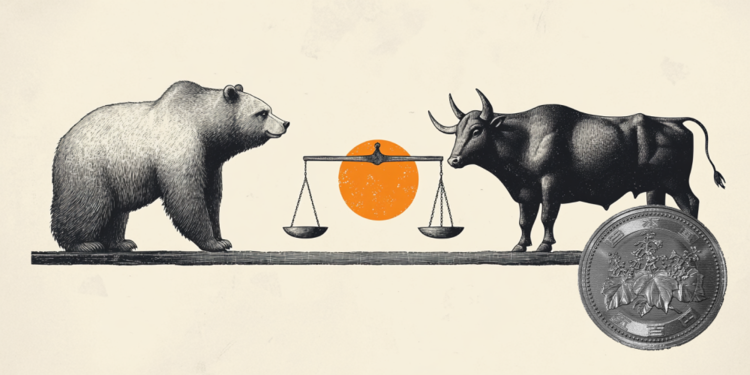- The Yen loses ground as the Japanese government slashes economic growth expectations for 2025.
- Japanese officials affirmed that the BoJ might be behind the curve with interest rates.
- The USD/JPY remains trading back and forth between 146.60 and 148.00.
The US Dollar is reversing previous lows against the Japanese Yen, as safe assets suffer on Thursday, amid a moderate appetite for risk. In Japan, the Government’s downgrade of its GDP forecasts has offset Japanese officials’ calls for higher rates.
The Japanese Cabinet Office cut its Gross Domestic Product growth expectations for 2025 to 0.7% from the 1.2% forecast released in January, as, according to the latest report, Trump’s tariffs will reduce exports to the United States and weigh on the global economy.
The Bank of Japan, behind the curve
The report has offset comments from a private sector member of the government’s top economic council, warning that the Bank of Japan might be too late with rate hikes, as the CPI is above the 2% target, already affecting people’s lives and their inflation expectations.
Another private sector member affirmed that while in the past the target was accelerating price growth to 2%, the focus now should be on keeping it steady at that level.
These comments highlight the increasing concerns about the economic impact of steady price increases and add pressure on the central bank to continue tightening its monetary policy.
The positive impact on the Yen, however, was marginal. The US Dollar extends its recovery from session lows at 146.70, reaching levels close to 147.40 so far. The pair, however, remains trapped within the weekly range, below 148.00, consolidating losses after dropping more than 2% last f¡Friday, following a weak US NFP release.
Bank of Japan FAQs
The Bank of Japan (BoJ) is the Japanese central bank, which sets monetary policy in the country. Its mandate is to issue banknotes and carry out currency and monetary control to ensure price stability, which means an inflation target of around 2%.
The Bank of Japan embarked in an ultra-loose monetary policy in 2013 in order to stimulate the economy and fuel inflation amid a low-inflationary environment. The bank’s policy is based on Quantitative and Qualitative Easing (QQE), or printing notes to buy assets such as government or corporate bonds to provide liquidity. In 2016, the bank doubled down on its strategy and further loosened policy by first introducing negative interest rates and then directly controlling the yield of its 10-year government bonds. In March 2024, the BoJ lifted interest rates, effectively retreating from the ultra-loose monetary policy stance.
The Bank’s massive stimulus caused the Yen to depreciate against its main currency peers. This process exacerbated in 2022 and 2023 due to an increasing policy divergence between the Bank of Japan and other main central banks, which opted to increase interest rates sharply to fight decades-high levels of inflation. The BoJ’s policy led to a widening differential with other currencies, dragging down the value of the Yen. This trend partly reversed in 2024, when the BoJ decided to abandon its ultra-loose policy stance.
A weaker Yen and the spike in global energy prices led to an increase in Japanese inflation, which exceeded the BoJ’s 2% target. The prospect of rising salaries in the country – a key element fuelling inflation – also contributed to the move.
Read the full article here


